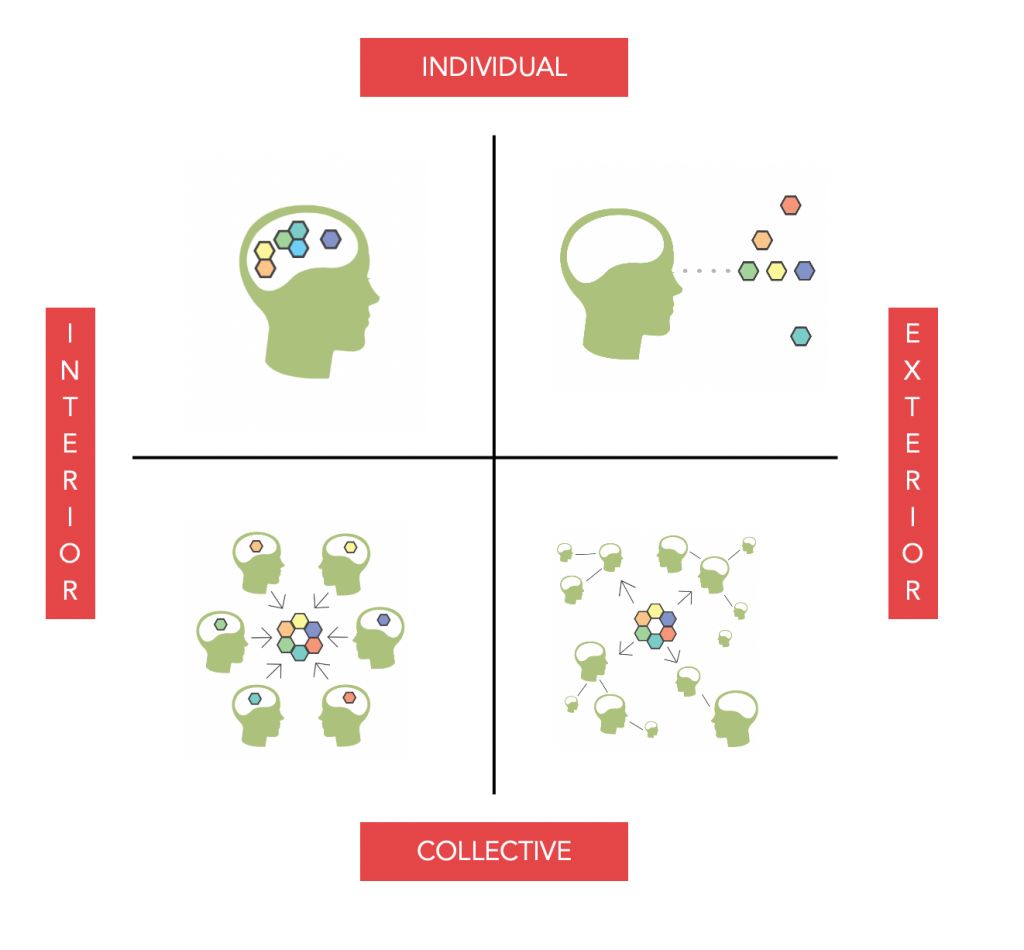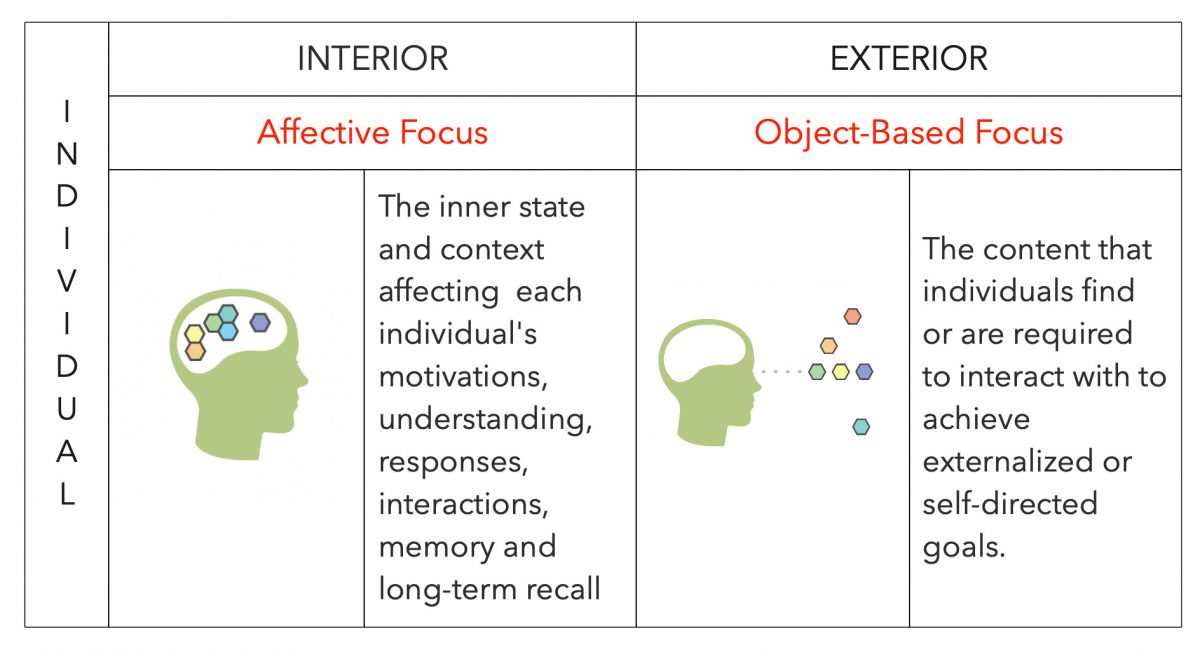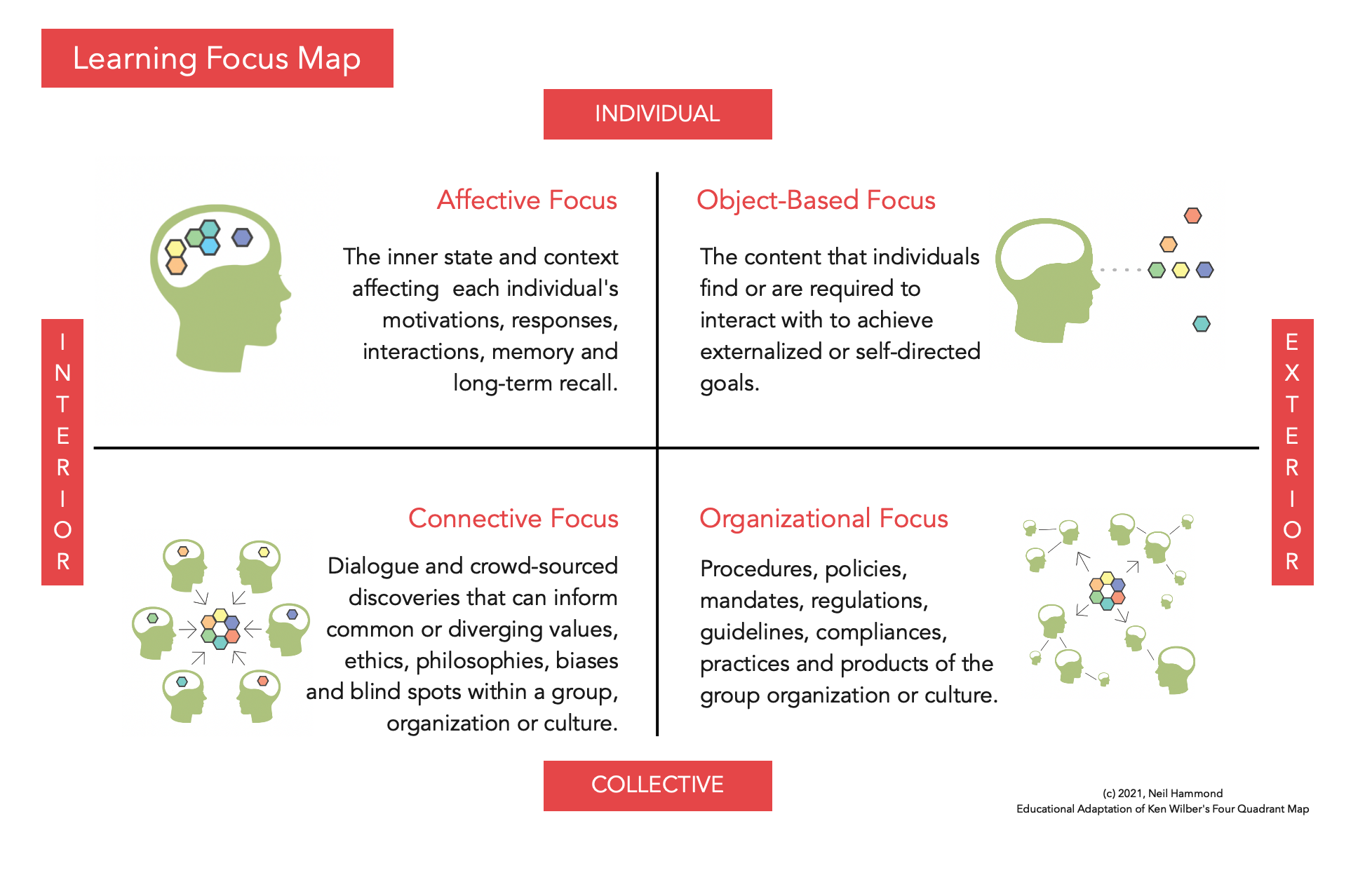
In our previous post, Introducing Learnbase’s Learning Focus Map, we provided a brief background to the Learning Focus Map. In this post we’ll walk you through The Focus Map in a slightly theoretical way.
Focus Map Overview
The Learning Focus Map is inspired by and borrows from an aspect of Integral Theory developed by philosopher Ken Wilber. It uses a quadrant system with the following axes:

The terms Interior and Exterior in this context do not refer to the internal / external aspects of an organization like ‘external outreach’ or an ‘internal memo’. Exterior refers to the produced content that a learner encounters, or in which an organization or culture operates and presents itself in terms of its products, services, mandates and policies. Interior refers to an individual’s mind, emotions and motivations, or the collective negotiation of ideas, understandings, philosophies, values and ethics that inform exterior culture or practices.
Individual Perspectives

While conventional approaches to learning have been largely focused on exterior aspects (content, assets, systems, testing), interior affective considerations (memory, emotional response or collective negotiation of knowledge) are frequently a systematic blindspot. In other words the focus has been on the content and creation of learning objects, not the relationship of the individual to the content, where meaning, connection and impacts on memory are forged.
Within an externalized pre-occupation with education, the interior affective context of the individual can get subsumed within the broader consideration of the larger corresponding demographic into which an individual fits.
This conventional stance is increasingly at odds with more recent approaches to training (Transformational, Connectivist, Heutagogical) that at least in part consider the internal unique ‘fingerprint’ of the emotional and social context that all individuals bring to any learning situation. This affective context directly affects motivation, understanding, interaction and memory.
Project management teams and subject matter experts (not to mention their senior managers and project funders) are themselves often examples of success in conventional learning contexts. They can be unaware of the extent to which their own interior affective context came into play within their own experience of education. They can unconsciously downplay both the affective, intrapersonal and social advantages that enabled their own educational success.
This can then lead to the presumption that the exterior aspects of educational delivery that they were exposed to in the past are the only ingredients required for any proposed learning situation. Understandably, non-educational specialists may lack the aspects of constructivist training that educators (should) have gone through to force them to question and re-evaluate their own experience, attitudes to learning and resulting biases.
Collective Perspectives

The organizational focus can refer to a team, a department, the organization as a whole, or more notionally to the societal culture that a learning initiative seeks to impact. As this is an exterior focus, it is where interior values, learnings and insights manifest into tangibles like policy, programs, projects and practices.
These ideas and values, learnings and insights, however, are formed in the interior collective. We call this connective focus. This applies to wider networks of individuals, communities of practices, conferences and social media threads (for better or worse!) that help people discuss, share and negotiate ideas.
Organizations, being organizations, will often default to defining learning formats and delivery from an organizational perspective. In platform design, for example, we increasingly work with organizations to move from home pages with dozens of options that say ‘look at all the things that we do’, to a more affective approach with far more funneled navigation. The latter communicates: ‘how can we help you find exactly what you need in this moment?’. Essentially we help turn an exclamation into a question.
Bringing together the Four Quadrants in The Learnbase Learning Focus Map
Our educational framing of the four quadrants together make an integral whole that can be used to map, plan and assess project-based, departmental or organizational initiatives.

Some recent approaches, lacking an integrative, all-encompassing framework, tend to fixate on specific internalized aspects in reaction to the heavily externalized approaches that dominated the previous century. So we hear a lot about ‘Connectivist’ or ‘Affective’ learning as if those aspects in themselves hold all the answers. We suggest that- wherever and whenever possible, all four quadrants should be considered and, where feasible, be represented in the design and delivery of any learning or informational design and development process.
Equally, as we’ll explore in this series, if a specific technology has been chosen, the Learning Framework can be used to identify the possibilities as well as the ‘blind spots’.
Read our next post, Mapping Approaches on the Learnbase Learning Focus Map